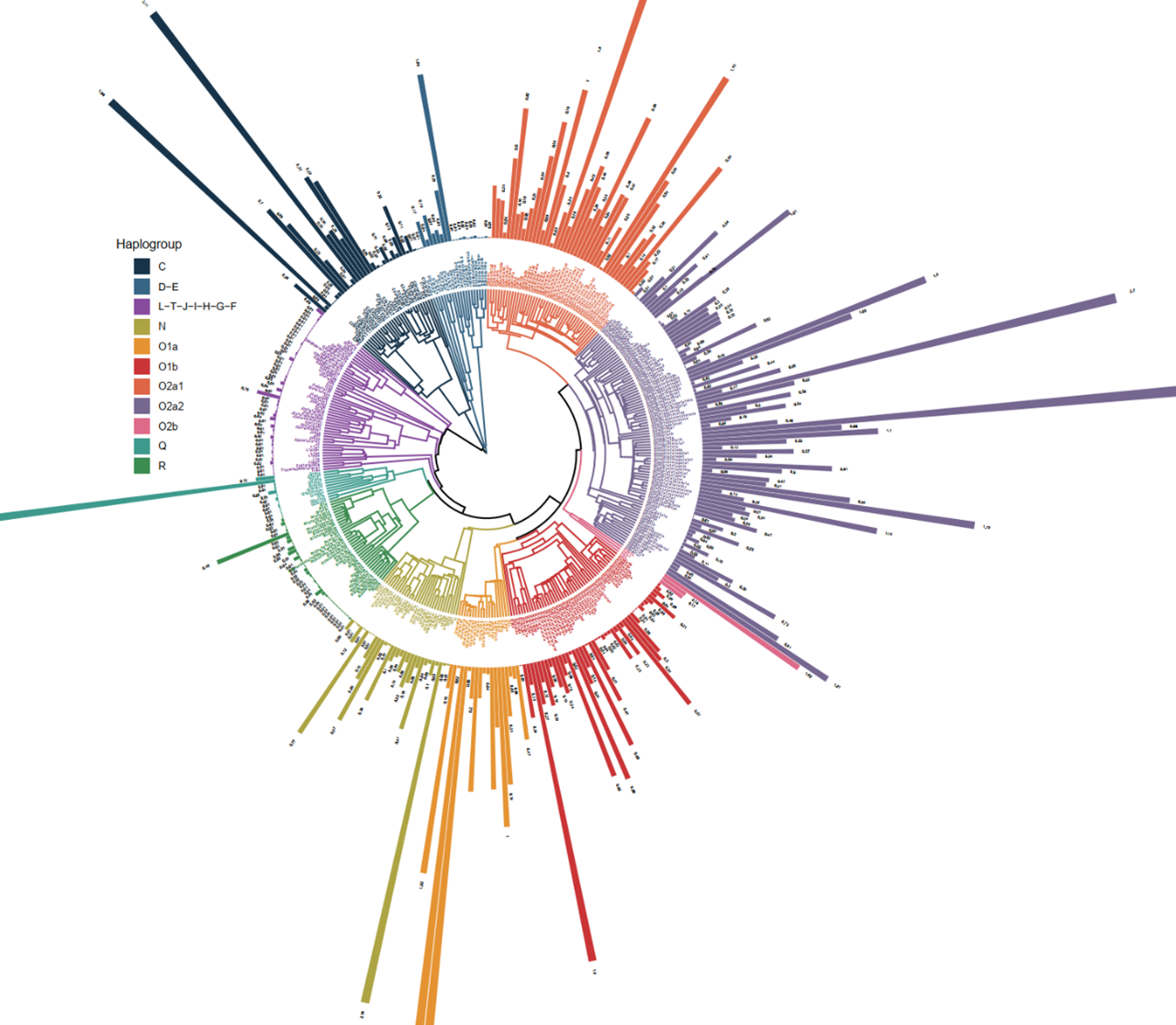Found 1 results
Article
20 July 2023Fine-scale Genetic Structure of Geographically Distinct Patrilineal Lineages Delineates Southward Migration Routes for Han Chinese
The Han Chinese (HAN) represent the world’s largest ethnic group, and their genetic structure has been the focus of numerous studies. Yet previous studies failed to draw out finer population stratification of patrilineal HAN, due to limitations in sample size and genetic marker density. This essay employs a Y-haplogroup frequency dataset from virtually whole China aiming to draw out a detailed genetic structure of the patrilineal HAN. We provide an overview of the Y chromosome haplogroup distributions, and find that the patrilineal HAN can be divided into five geographic subgroups. Analysis of Molecular Variance (AMOVA) provided further support for the five-substructure model. By comparing patrilineal and matrilineal descent, we revealed stronger geographical aggregation for patrilineal HAN. Moreover, populations with patrilineal descent showed lower levels of haplogroup diversity (HD) compared to those with matrilineal descent, suggesting potential population bottleneck of patrilineal HAN. The larger HD among northern patrilines verified historical migration of HAN from north to south, which validated by neighbor joining tree (NJ-tree). Overall, we speculate the southward migration routes for Han Chinese, and the HAN south of the Nanling Mountains may have entered via the middle reaches of the Yangtze River, rather than via eastern coastal provinces.
